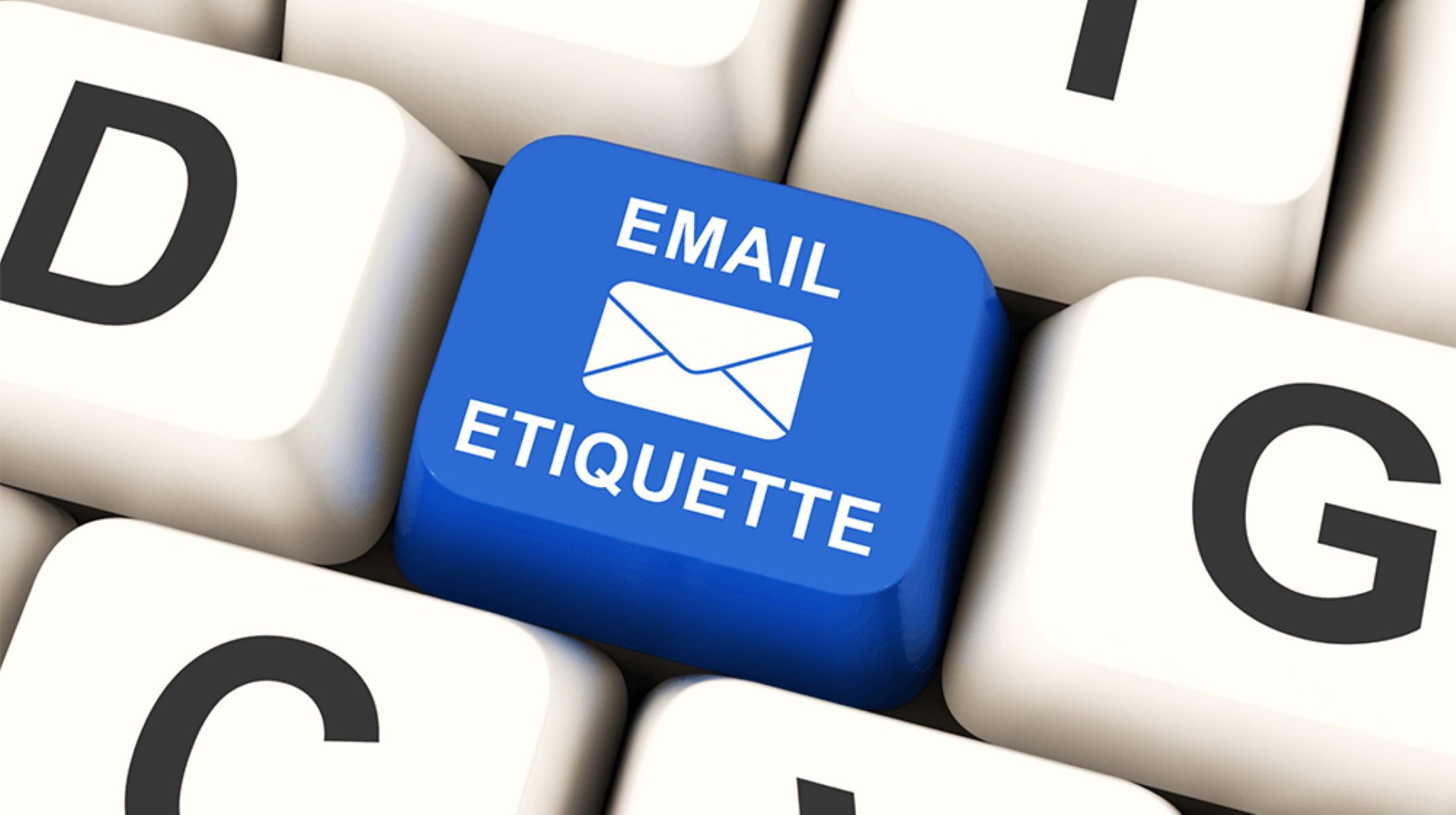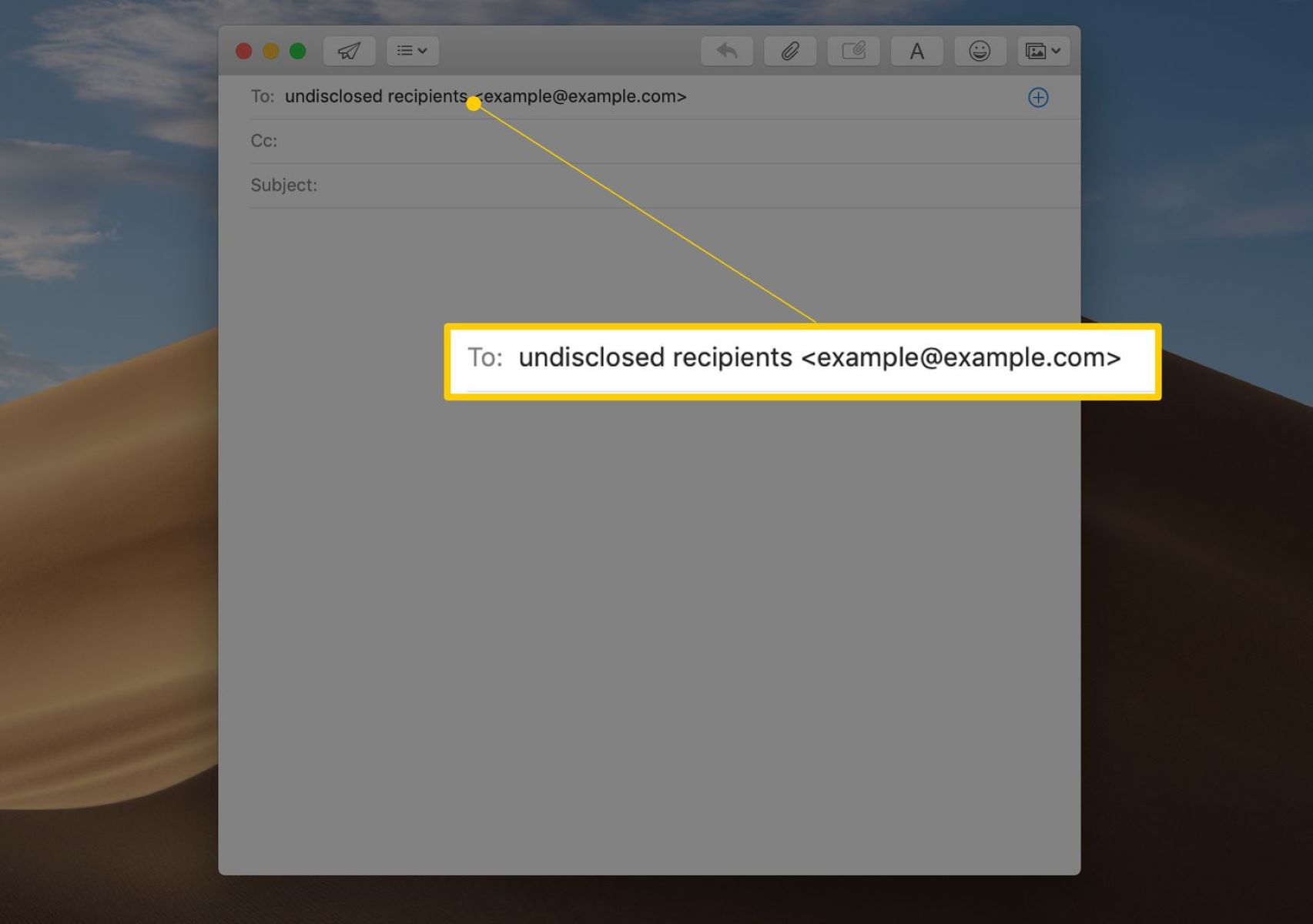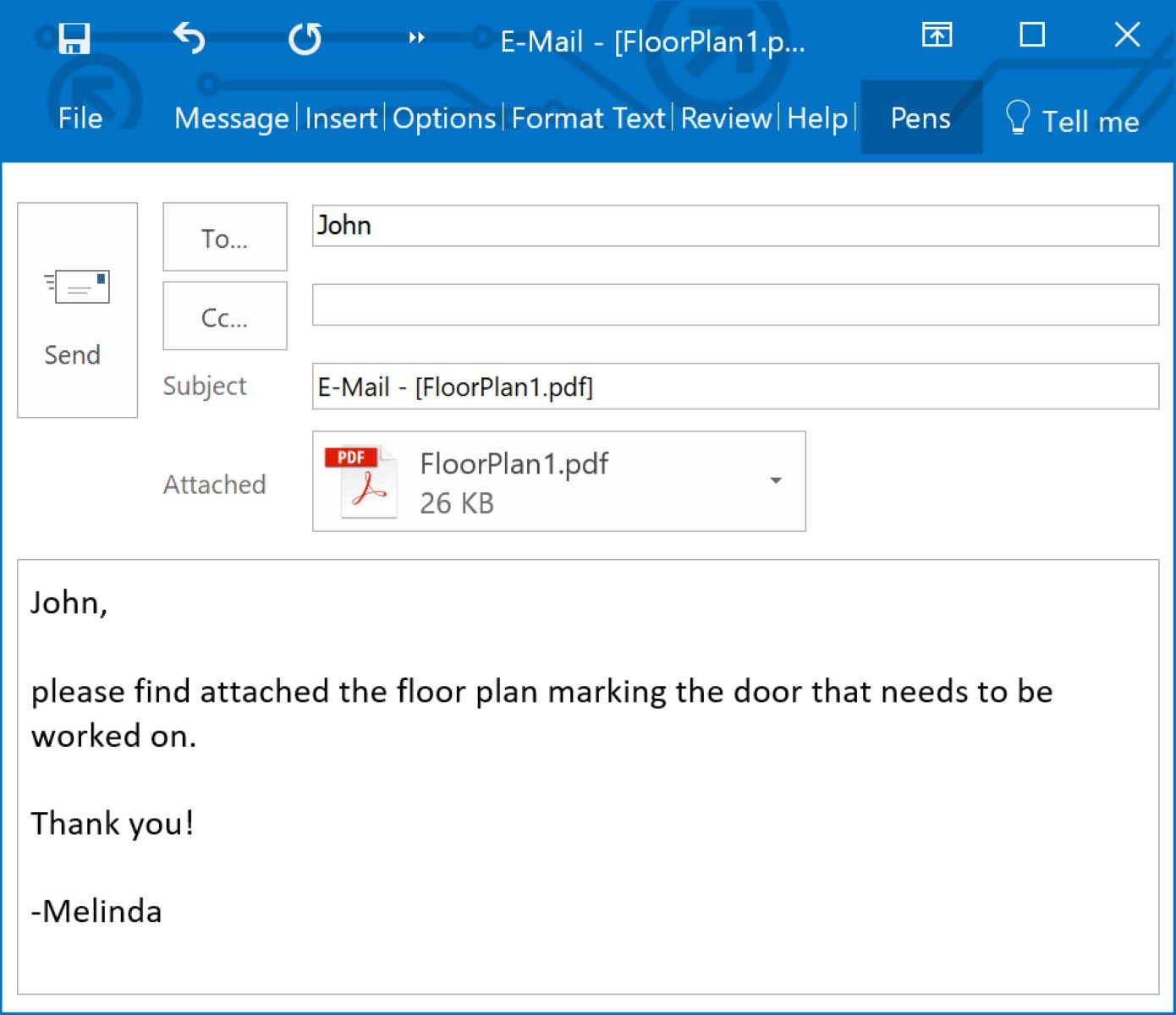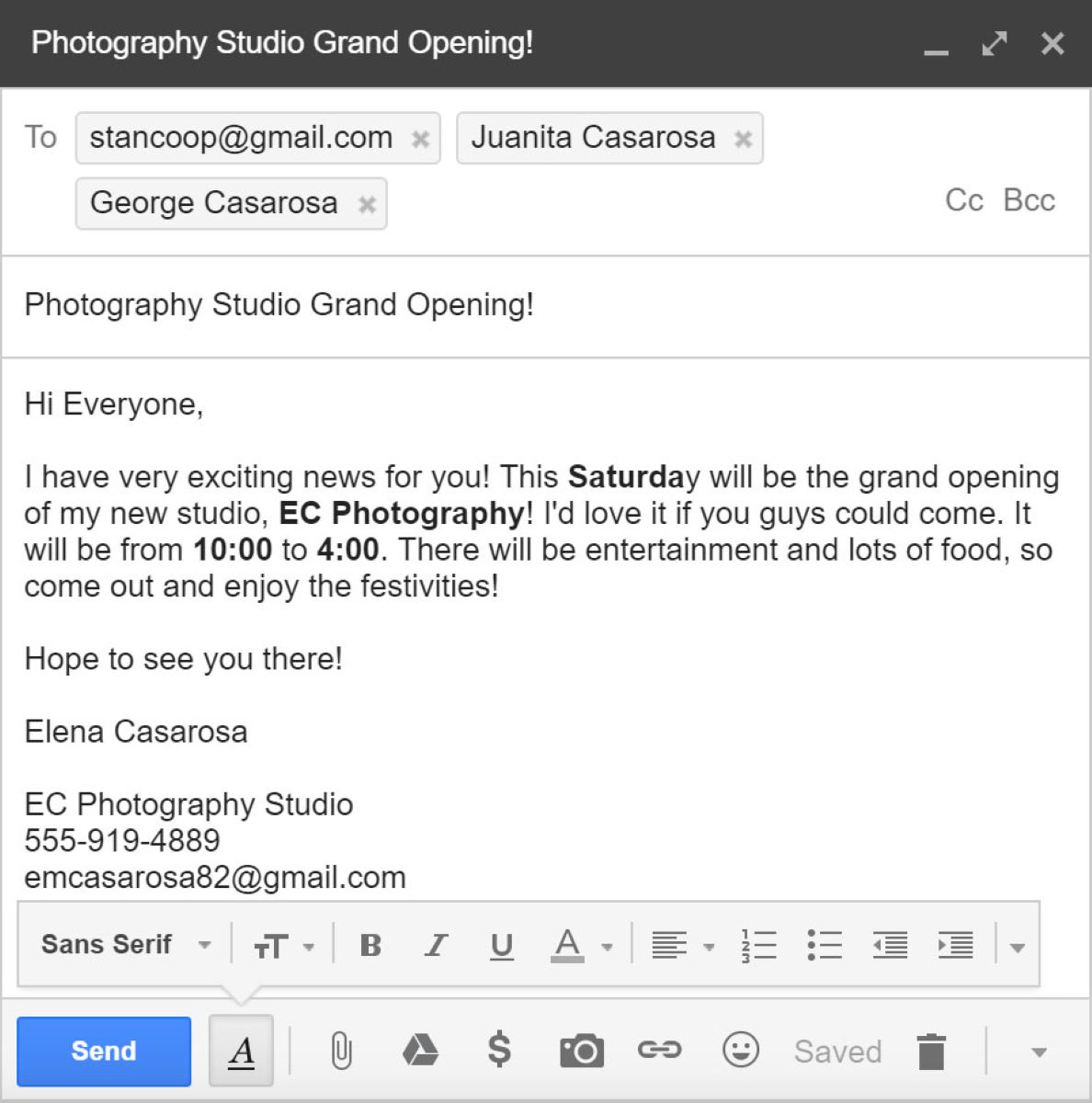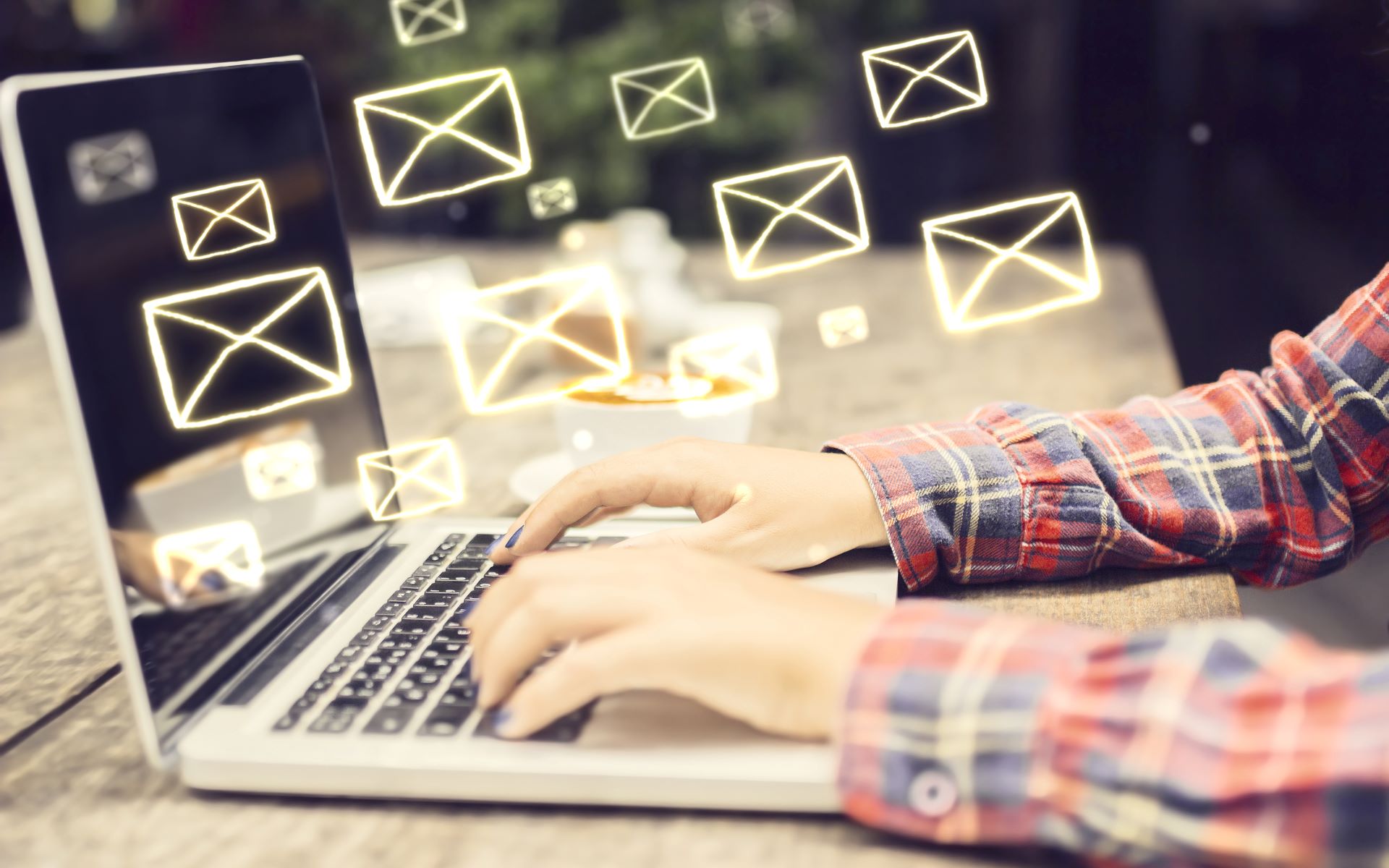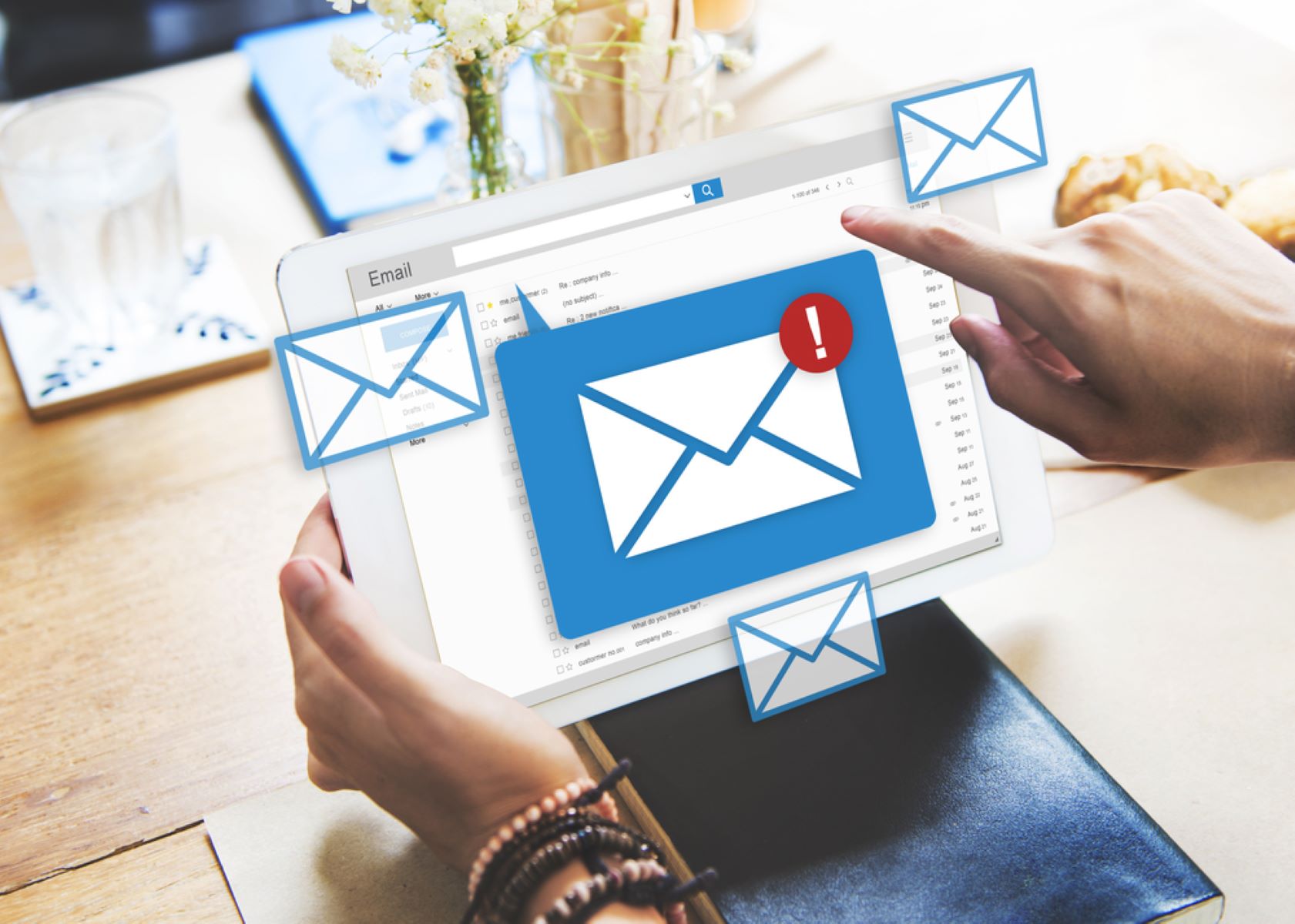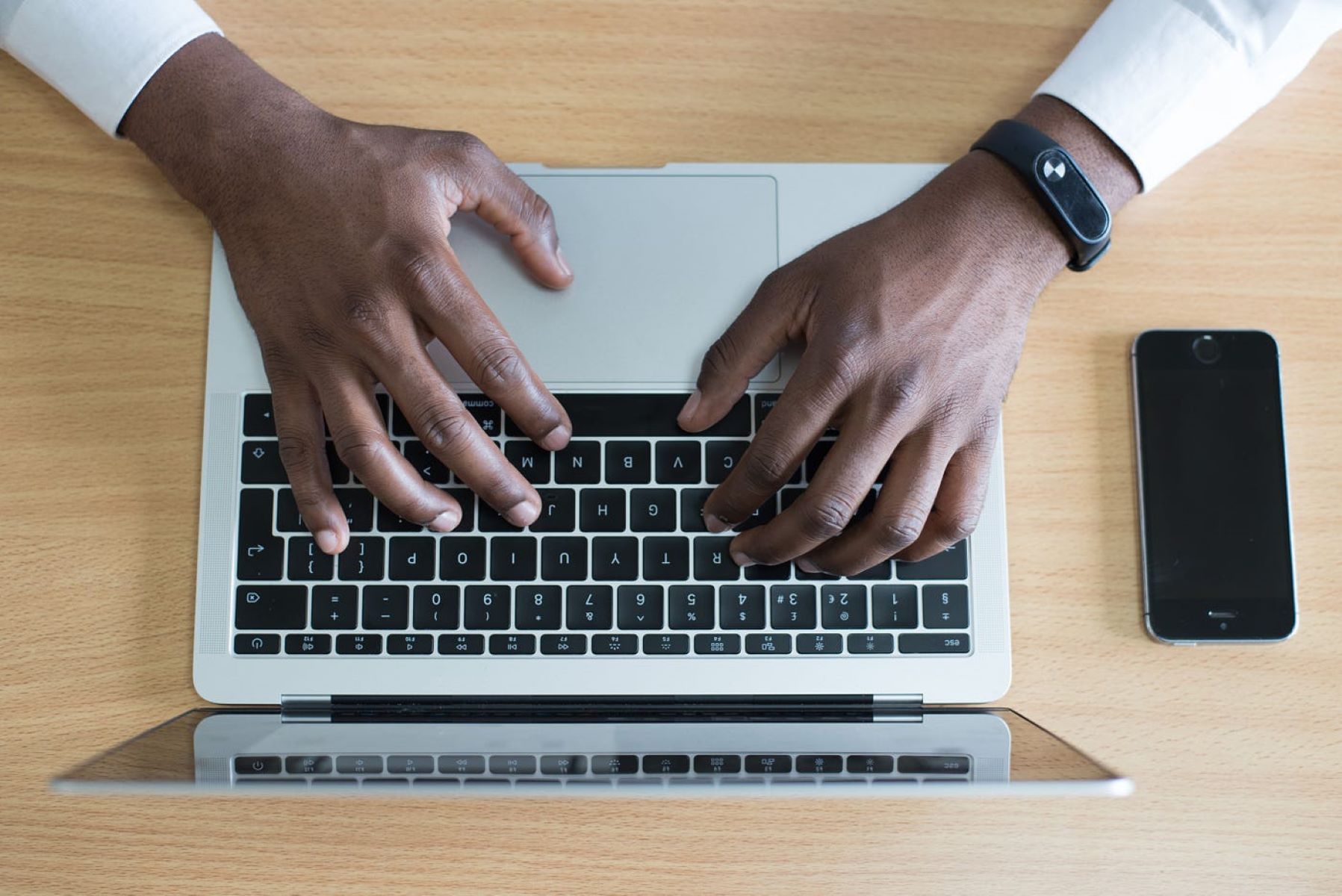Introduction
Email communication has become an integral part of our personal and professional lives. It offers a quick and convenient way to exchange information, collaborate with colleagues, and connect with clients and customers. However, it is important to remember that email etiquette plays a crucial role in ensuring effective and professional communication. From portraying professionalism and credibility to avoiding misunderstandings and conflicts, practicing proper email etiquette is essential for maintaining positive relationships and maximizing productivity.
With the increasing reliance on digital communication, email has become the primary mode of interaction for businesses and individuals alike. It serves as a digital handshake, and the way we compose and respond to emails reflects our professionalism and credibility. When we adhere to appropriate email etiquette, we convey a sense of respect and competence to the recipients. This can significantly impact how others perceive us and the reputation we build in the professional world.
Furthermore, proper email etiquette helps ensure clarity and conciseness in our communication. By crafting well-structured emails with clear subject lines and concise messages, we enable recipients to understand the purpose and content of our emails without confusion or unnecessary back-and-forth. This enhances efficiency and saves valuable time for both the sender and the recipient.
Respecting the norms of email communication is another vital aspect of email etiquette. It involves being mindful of the tone and language we use in our emails, treating recipients with courtesy and professionalism, and refraining from using offensive or derogatory language. By demonstrating respect in our email exchanges, we foster positive relationships and build trust with our correspondents.
Efficient and productive communication is a key benefit of practicing proper email etiquette. By organizing and structuring our emails effectively, using concise and relevant subject lines, and being mindful of the recipients’ time, we contribute to streamlined communication. This helps ensure that our messages are read and responded to in a timely manner and facilitates effective collaboration and decision-making.
Email etiquette also plays a vital role in building positive relationships. By expressing appreciation, acknowledging others’ contributions, and using appropriate greetings and sign-offs, we show consideration and create a positive impression. These small gestures go a long way in nurturing professional connections and establishing rapport with colleagues, clients, and customers.
Moreover, adhering to email etiquette guidelines helps prevent misunderstandings and conflicts. By communicating clearly, avoiding ambiguous language, and double-checking our messages, we minimize the chances of being misunderstood or unintentionally causing offense. This encourages effective communication and reduces the risk of unnecessary tensions or disagreements.
Maintaining privacy and security is another critical aspect of email etiquette. By being cautious with sharing sensitive information, using secure methods of communication, and respecting recipients’ confidentiality, we protect not only our own data but also that of others. This safeguards professional integrity and ensures trust in our communication channels.
Overall, practicing proper email etiquette is essential in today’s digital age. It allows us to portray professionalism, communicate effectively, build positive relationships, avoid conflicts, and ensure privacy and security. By understanding and implementing the principles of email etiquette, we can harness the full potential of email communication and enhance our personal and professional lives.
Professionalism and Credibility
When it comes to email communication, portraying professionalism and credibility is of utmost importance. The way we compose and present our emails can significantly impact how others perceive us and our level of competence. By practicing proper email etiquette, we demonstrate our professionalism and establish a strong sense of credibility.
One of the key components of professionalism in email communication is using a professional email address. A personalized email address that includes your name or the name of your business helps create a positive impression. It not only reflects your professionalism but also makes it easier for recipients to identify you and your organization.
In addition to the email address, it is crucial to maintain a polite and respectful tone in all email interactions. Using appropriate greetings and salutations, such as “Dear,” “Hello,” or “Hi,” followed by the recipient’s name, sets a professional tone from the start. It shows that we value the recipient’s time and creates a positive tone for the rest of the email.
Furthermore, the body of the email should be concise, well-organized, and free of spelling and grammatical errors. It is important to clearly state the purpose of the email in the subject line and provide relevant and concise information in the body. Avoid using excessive jargon or technical language that may confuse the recipient. Instead, use clear and concise language that is easy to understand.
When it comes to email etiquette, it is crucial to respond promptly to emails. Timely responses demonstrate professionalism and show that you value the sender’s time and input. Even if you are unable to provide a detailed response immediately, acknowledging the receipt of the email and indicating when the recipient can expect a more comprehensive reply is considerate and professional.
Another aspect of professionalism in email communication is paying attention to formatting and layout. Use appropriate font styles and sizes that are easy to read, and use bullet points, numbered lists, or paragraphs to structure your emails effectively. This makes it easier for the recipient to follow and comprehend the information presented.
Finally, it is important to sign off emails professionally. Using phrases such as “Sincerely,” “Best regards,” or “Thank you” followed by your name and contact information adds a professional touch to your email. It not only provides closure to the email but also offers an opportunity for the recipient to easily contact you if needed.
By consistently practicing proper email etiquette and maintaining a professional tone, we establish credibility and build a positive reputation. When recipients perceive us as professional and competent, they are more likely to value our contributions, trust our expertise, and engage in meaningful and productive communication. Ultimately, professionalism and credibility in email communication play a crucial role in establishing strong professional relationships and achieving success in our endeavors.
Clarity and Conciseness
Clarity and conciseness are essential elements of effective email communication. When we practice proper email etiquette to ensure our messages are clear and concise, we increase the likelihood that our recipients will understand the information provided without confusion or misinterpretation. By utilizing language and formatting techniques that promote clarity and conciseness, we can enhance the effectiveness of our emails.
One of the first steps in achieving clarity in email communication is to use a clear and concise subject line. The subject line should accurately summarize the content of the email and provide a clear indication of what the recipient can expect. By using specific keywords or phrases that capture the essence of the email, we help the recipient prioritize and categorize their emails effectively.
In the body of the email, it is important to use concise and straightforward language. Avoid unnecessary verbiage and tangents that can lead to confusion or dilute the main message. Be direct and to the point, providing the necessary information without overwhelming the recipient with excessive details. However, it is also important to balance brevity with providing sufficient context to ensure the recipient fully understands the purpose and context of the email.
To improve readability and comprehension, consider breaking down longer paragraphs into shorter ones and utilizing bullet points or numbered lists to present information in a structured format. This not only makes the email easier to read but also allows the recipient to quickly scan and absorb the main points. Additionally, using clear and concise language and avoiding technical jargon or acronyms can help minimize misinterpretations and ensure the intended message is effectively conveyed.
Proofreading is a crucial step in maintaining clarity and conciseness in email communication. Take the time to carefully review your email before sending it, checking for any grammatical or spelling errors. These errors can not only undermine your professionalism but also lead to misunderstandings or confusion. Double-checking the accuracy of the information provided and ensuring that the email flows logically can further enhance clarity and avoid unnecessary back-and-forth exchanges.
When conveying complex or sensitive information, it is helpful to consider the recipient’s level of knowledge or familiarity with the topic. If necessary, provide additional context or explanations to ensure clarity and prevent misinterpretation. Additionally, including attachments or hyperlinks that support or expand on the content of the email can further clarify information and provide additional resources for the recipient to refer to if needed.
By prioritizing clarity and conciseness in our email communication, we facilitate effective understanding and reduce the potential for misunderstandings or misinterpretations. Clear and concise emails not only save time but also contribute to efficient and productive communication. Fostering clarity in our emails allows us to convey information effectively, ensuring that our messages are understood and acted upon in a timely manner.
Respectful Communication
Respectful communication is a fundamental aspect of proper email etiquette. When we practice respect in our email exchanges, we foster positive relationships and maintain a professional and amicable tone. By being considerate and mindful of the language and tone we use, we contribute to a harmonious and respectful communication environment.
One important element of respectful communication in emails is using polite and courteous language. Addressing the recipient with appropriate salutations, such as “Dear” or “Hello,” followed by their name, shows respect and acknowledges their individuality. It sets a positive tone for the email and creates a sense of rapport with the recipient.
Additionally, it is important to avoid using offensive or derogatory language in email communication. Emails can be forwarded or shared, and using inappropriate or offensive language reflects poorly on our professionalism and can cause unnecessary conflict or damage to relationships. It is best to express disagreements or provide feedback in a constructive and respectful manner to maintain the integrity of our communication.
Furthermore, being mindful of the tone of our emails is crucial. Emails can sometimes be misinterpreted due to the absence of nonverbal cues, such as facial expressions or tone of voice. To avoid misunderstandings, it is important to choose our words carefully and consider how they may be perceived by the recipient. Taking a neutral and respectful tone, and avoiding the use of all capital letters, excessive exclamation marks, or aggressive language can help prevent unintended negative implications.
Active listening and empathy are key components of respectful communication in emails. When responding to emails, take the time to thoroughly read and understand the content before crafting a thoughtful response. Acknowledge the points made by the sender and respond in a way that shows attentive listening. Expressing empathy or understanding when appropriate can contribute to a positive and supportive communication environment.
Appreciation and gratitude are also important in demonstrating respect in email communication. When someone takes the time to send us an email or provide us with information or assistance, expressing gratitude through a simple “thank you” goes a long way in acknowledging their efforts and fostering a positive relationship. Taking the time to express appreciation can contribute to building strong professional connections and encourage ongoing collaboration.
Finally, it is essential to respect the recipient’s time and respond to emails in a timely manner. Promptly acknowledging the receipt of an email, even if a comprehensive response is not possible immediately, shows respect for the sender’s time and effort. Strive to provide timely and relevant responses to avoid delays in communication and promote efficient collaboration.
By practicing respectful communication in emails, we contribute to a positive and productive work environment. Respectful emails not only enhance professional relationships but also generate a sense of mutual trust and understanding. By embodying respect in our email exchanges, we can create a positive and supportive atmosphere in which effective communication can thrive.
Efficient and Productive Communication
Efficient and productive communication is the desired outcome of practicing proper email etiquette. By optimizing our email communication, we can effectively convey our messages, collaborate with others, and achieve our goals in a timely manner. Through structured and organized emails, concise messaging, and mindful email management, we can maximize productivity and streamline our communication processes.
One of the key aspects of efficient and productive communication in emails is clear and concise messaging. By getting straight to the point and being mindful of the recipient’s time, we can ensure that our emails are read and understood quickly. Avoid long-winded explanations or unnecessary details that may overwhelm the recipient. Instead, focus on providing the necessary information concisely, using bullet points or numbered lists when appropriate.
Another crucial element of efficient and productive communication is using descriptive subject lines. A well-crafted subject line accurately summarizes the content and purpose of the email, enabling recipients to prioritize and respond quickly. By using specific keywords and phrases in the subject line, we help ensure that our emails get the attention they deserve and avoid being overlooked or buried in crowded inboxes.
Organizing and structuring our emails effectively can also significantly enhance efficiency. Using paragraphs and headings to separate different topics or sections, as well as utilizing bullet points or numbered lists, makes it easier for recipients to read and digest the information. Additionally, consider using formatting options such as bold or italic text to highlight important points or key takeaways.
Managing email correspondence efficiently involves handling email threads and conversations in a streamlined manner. Responding to emails promptly, if possible, and keeping the conversation focused and on track can help avoid unnecessary back-and-forth exchanges. When appropriate, consolidating multiple points or questions into a single email can save time and streamline communication.
Furthermore, it is important to consider the recipient’s perspective when composing emails. Put yourself in their shoes and anticipate any questions or concerns they may have. By proactively addressing these aspects in your email, you can provide comprehensive information from the start, reducing the need for further clarification requests and expediting the decision-making process.
Email etiquette also involves being mindful of the appropriate level of formality and the urgency of the situation. Consider the recipient’s relationship with you and the context of the communication. For urgent matters, it may be more effective to use a concise and direct email, while for more formal or complex topics, a more detailed and thought-out email may be necessary.
Finally, effective email communication also entails managing email overload and prioritizing emails accordingly. Regularly reviewing and organizing your inbox, setting up filters and folders for specific types of emails, and utilizing tools like email flags or flags can help you stay on top of your correspondence. By prioritizing emails based on importance and urgency, you can ensure that critical messages are addressed promptly and efficiently.
By implementing strategies and techniques for efficient and productive communication in emails, we can save time, streamline processes, and enhance collaboration. Through clear and concise messaging, structured emails, and effective email management, we can optimize our communication practices and achieve our objectives more effectively.
Building Positive Relationships
Email communication provides a valuable opportunity to build and nurture positive relationships with colleagues, clients, and customers. By practicing proper email etiquette and focusing on relationship-building, we can foster trust, enhance collaboration, and create a positive and supportive professional network.
One of the key aspects of building positive relationships through email is expressing appreciation and gratitude. Taking the time to thank someone for their help, expertise, or contribution in an email demonstrates a sense of gratitude and acknowledgement. By showing appreciation for others’ efforts, we validate their contributions and encourage an ongoing positive relationship.
Using appropriate and personalized greetings in email communication also contributes to relationship-building. Addressing the recipient by name and using a friendly and warm tone helps to establish rapport and create a sense of connection. This personal touch shows that we value the individual and are interested in cultivating a meaningful relationship.
Building positive relationships also involves actively listening and responding to emails in a genuine and thoughtful manner. Demonstrating attentiveness and understanding when reading and responding to emails promotes effective communication and strengthens the connection between sender and recipient. By acknowledging and addressing the points raised by the sender, we signal that their input is valued and heard.
Providing support and offering assistance in emails is another way to build positive relationships. Offering help or guidance to colleagues, clients, or customers when needed demonstrates a willingness to collaborate and contribute to their success. By being responsive and proactive in our email exchanges, we establish ourselves as a reliable and supportive resource.
Sharing useful and relevant information in our emails can also help build positive relationships. Whether it’s forwarding insightful articles, recommending valuable resources, or providing industry updates, sharing knowledge with others shows that we are invested in their growth and success. This establishes us as a valuable ally and resource in their professional journey.
Furthermore, being mindful of the recipient’s perspective and considering their needs and preferences in email communication can strengthen relationships. Tailoring our emails to their communication style and preferences, such as their preferred level of formality or preferred method of communication, demonstrates our attentiveness and adaptability. This helps create a more personalized and comfortable interaction.
Resolving conflicts or misunderstandings in a constructive and respectful manner is also essential in building positive relationships. When disagreements or misunderstandings arise, addressing them with diplomacy and empathy can help to preserve relationships and foster understanding. By actively seeking resolution and maintaining open lines of communication, we can work towards building stronger and more trusting relationships.
Finally, it is important to be consistent and reliable in our email communication. Responding to emails in a timely manner, following up on commitments made, and keeping our promises demonstrates our reliability and professionalism. These actions help to build trust and confidence in our relationships, leading to stronger and more meaningful connections.
By focusing on building positive relationships through email communication, we can establish a network of trusted and supportive individuals. Through expressions of gratitude, active listening, offering assistance, sharing relevant information, and resolving conflicts constructively, we can cultivate relationships that inspire collaboration, growth, and mutual success.
Avoiding Misunderstandings and Conflicts
Email communication, while convenient and efficient, can sometimes lead to misunderstandings and conflicts. However, by practicing proper email etiquette and employing effective communication strategies, we can minimize these challenges and foster clarity and harmony in our email exchanges. By being mindful of our language, tone, and message organization, we can diminish the potential for misunderstandings and conflicts to arise.
One of the primary ways to avoid misunderstandings in email communication is to be clear and concise in our messaging. Clearly stating our intentions or requests and providing specific details or instructions can help avoid confusion. Avoid using ambiguous language or assuming that the recipient is aware of certain information. Taking the time to ensure our messages are easy to understand can prevent misinterpretations and subsequent misunderstandings.
Choosing the right words and tone is crucial in avoiding conflicts in email communication. It is important to use language that is respectful and considerate, as well as to avoid any language that could be interpreted as confrontational or aggressive. Keeping our tone neutral and professional can help prevent unintended conflicts or tensions. Additionally, taking a moment to reread and review our emails for potential misunderstandings or unintended implications can help us catch any potential issues before they arise.
When addressing criticism or providing feedback in emails, it is important to adopt a constructive and diplomatic approach. By focusing on the behavior or issue and not attacking the individual, we can avoid escalating conflicts. Providing specific examples and suggestions for improvement, coupled with empathy and understanding, can help foster a more positive and receptive response.
Avoiding the use of all capital letters or excessive exclamation marks is also crucial in preventing misunderstandings and conflicts. These formatting choices can come across as shouting or being overly aggressive, and they can easily be misinterpreted by the recipient. Instead, choose appropriate and professional formatting options to emphasize important points or areas of focus without compromising clarity and professionalism.
Furthermore, actively listening and practicing empathy play significant roles in preventing misunderstandings and conflicts. When reading and responding to emails, take the time to fully understand the sender’s perspective and consider the emotions or concerns they may be experiencing. Responding with empathy and showing a willingness to understand their point of view can diffuse tension and promote open and respectful communication.
Proofreading and reviewing our emails before sending them is a vital step in preventing misunderstandings and conflicts. Double-checking for grammatical errors, spelling mistakes, and inconsistencies can ensure that our messages are clear and coherent. Additionally, ensuring that the email is well-organized and follows a logical flow of information can help prevent confusion or misinterpretation.
In cases where potential conflicts or misunderstandings do arise, it is important to address them directly and promptly. Open and honest communication is key in resolving issues before they escalate. Initiating a conversation to clarify any misunderstandings and seeking common ground can help facilitate resolution and maintain positive relationships.
By being mindful of our language, tone, message organization, and actively seeking to understand others’ perspectives, we can navigate email communication with fewer misunderstandings and conflicts. Through clear and concise messaging, empathy, and effective communication strategies, we can foster a more harmonious and productive email communication environment.
Maintaining Privacy and Security
Ensuring privacy and security in email communication is essential to safeguard sensitive information and maintain the confidentiality of our conversations. By adopting proper email etiquette and following best practices, we can minimize the risk of data breaches and unauthorized access. By being vigilant and proactive, we can maintain the privacy and security of our email exchanges.
One of the primary ways to maintain privacy in email communication is to be cautious when sharing sensitive information. Before sharing personal or confidential data, assess the need for it to be transmitted through email. If possible, utilize more secure and encrypted communication channels, such as encrypted messaging platforms or secure file-sharing services. By taking the necessary precautions, we reduce the risk of unauthorized access to sensitive information.
Using strong and unique passwords for our email accounts is another crucial step in maintaining security. It is recommended to use a combination of uppercase and lowercase letters, numbers, and special characters to create strong passwords that are difficult to guess. Regularly updating and changing passwords can further enhance security and reduce the risk of unauthorized access.
Being cautious with email attachments is essential in maintaining security. Attachments can contain malware or viruses that can compromise the privacy and security of our systems and data. Before opening an attachment, verify its source and ensure it is from a trusted sender. Additionally, use reliable antivirus software to scan attachments and verify their safety before accessing them.
Another important aspect of maintaining privacy and security is to be aware of phishing scams and fraudulent emails. Phishing emails often appear to be from legitimate sources and attempt to trick recipients into revealing sensitive information or clicking on malicious links. By staying vigilant and being cautious of unexpected or suspicious emails, and by avoiding clicking on unknown or unsolicited links, we can reduce the risk of falling victim to these scams.
Regularly updating our email software and applications is vital in maintaining security. Software updates often include important security patches and bug fixes that address vulnerabilities. By staying up to date with these updates, we can ensure that our email systems are protected from the latest threats and security loopholes.
Additionally, it is important to be mindful of email forwarding and reply-all practices to maintain privacy. Before forwarding or replying to an email, consider whether it is necessary to include all the previous recipients. This can prevent unintended exposure of sensitive information to unintended parties. Utilizing the blind carbon copy (BCC) option when appropriate can help maintain the privacy of recipients’ emails.
Furthermore, being cautious of public or unsecured Wi-Fi networks is crucial in maintaining the security of our email communications. When accessing our emails in public places, such as coffee shops or airports, it is advisable to use a virtual private network (VPN) or a trusted hotspot to encrypt our internet connection and protect our data from potential eavesdropping.
By adopting these privacy and security measures, we can maintain the confidentiality and integrity of our email communications. Remaining vigilant, using secure communication channels, being cautious with attachments and links, regularly updating software, and being aware of phishing scams can help us mitigate the risks and protect our valuable information and sensitive data.
Conclusion
Email etiquette plays a vital role in ensuring effective and professional communication. By practicing proper email etiquette, we can enhance professionalism and credibility, promote clarity and conciseness, foster respectful communication, facilitate efficient and productive communication, build positive relationships, avoid misunderstandings and conflicts, and maintain privacy and security.
By portraying professionalism and credibility through a professional email address, polite language, and well-structured emails, we create a positive impression and foster trust with recipients. Ensuring clarity and conciseness in our email messages helps recipients understand the purpose and content without confusion or unnecessary back-and-forth. Respectful communication, through the use of polite language, empathy, and gratitude, promotes positive relationships and a supportive work environment.
Efficient and productive communication is achieved through clear and concise messaging, descriptive subject lines, effective email organization, and prompt responses. Building positive relationships is facilitated by expressing appreciation, active listening, offering assistance, sharing useful information, and resolving conflicts constructively.
To avoid misunderstandings and conflicts, we focus on clear and concise messaging, choosing the right words and tone, actively listening, proofreading our emails, and addressing any potential issues promptly. Maintaining privacy and security requires caution when sharing sensitive information, using strong and unique passwords, being cautious of email attachments and phishing scams, updating software regularly, and using secure networks.
By adhering to these principles of email etiquette and best practices, we can maximize the benefits of email communication and foster effective and productive interactions. Whether in our personal or professional lives, the way we communicate through email has a significant impact on how we are perceived and the quality of our relationships. By practicing proper email etiquette, we can elevate our communication skills, foster stronger connections, and achieve greater success in our endeavors.







